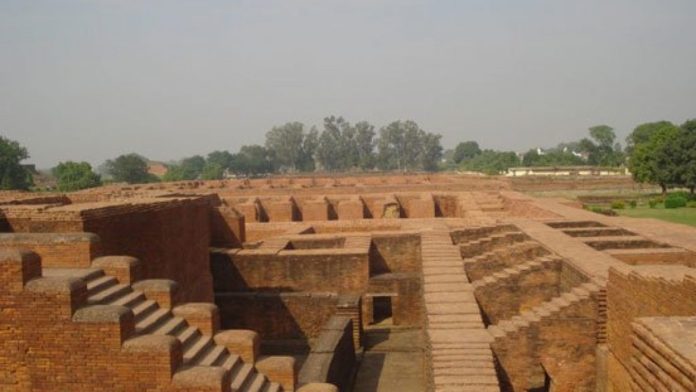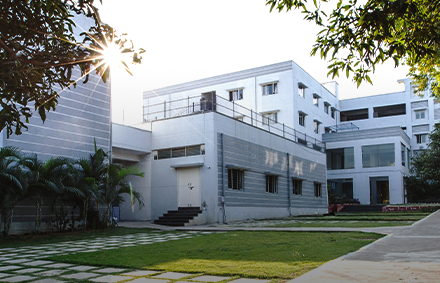In the conflict of real and unreal, knowledge is the only thing that connects your soul to reality and education reinforces a learner to stand straight in the crowd. India is not only known for its culture and traditions but also known for the ancient Indian educational system. The ancient education system educated hundreds of intellectual people that created wonders in history.
A glimpse of the Ancient Indian Education System:
The Educational period is divided into types: Vedic period, Mauryan period, Gupta period. In the Vedic period, Gurukul System was prevailing and the Moto was to spread knowledge and was mainly focused on education. In this system, the child had to leave his home and live with the guru in Gurukul in account to take education. The education system was not vocational it was purely based to gain knowledge. The child would start getting an education at the age of 5 and to mark this commencement the vidyarambha ceremony was conducted that included worship of goddess Saraswati. Society was not allowed to interfere in this curriculum. No fees were charged for education. Along with education students were supposed to do some manual daily work to learn life skills. The subjects like grammar, logic, metaphysics, astronomy, Vedas, and Sanskrit language were being taught. At the end of studies, the student would offer Gurudakshina to the Guru which was the gesture of acknowledgment and thanks.
This system aimed to preserve and spread the ancient culture and traditions and to pass it from generation to generation, to unfold the moral powers of individuals, formation of good and moral character, inclusion of social duties, and build a positive attitude. The development of the physical, mental, and intellectual personality of a student was also an aim as gurus train their students with yoga and meditation to gain balance.
Later in the Mauryan period, growth of urban centers and trade took place. Medical knowledge as Ayurveda was added, Arthashastra by Chanakya was added, and intensive changes took place. The astronomers and cosmologists started studying time. In the Gupta period, Universities like Taxila, Nalanda and Vikramshila were established and well-known in Asia for higher standard education and scholarship. That was the golden era when education was all about knowledge and passing it to the following generations.
Back in the old times, the moment when you feel proud and sorrowful at the same time is the moment when you listen about Nalanda. Nalanda, Taxila, and Vikramshila were powerful and prestigious universities in ancient times. Takshila University was established first in the Gupta period (4th to 9th century). Nalanda was the first university in the world that had a hostel and was a storehouse of knowledge.
Everything About Nalanda University:
Two prominent theories exist about the name of Nalanda. Some say Nalanda stands for Na Alam Da which means “Charity without a break” and other theory says, it’s a combination of Sanskrit words which means “The knowledge giver”. Till 1950 Nalanda was buried over time. Later the Archaeological Survey of India excavated this place.
History:
Nalanda Vishwavidyalay was founded by Kumargupta I in the Gupta dynasty in 413-455 BC. The local kings of the Gupta dynasty patronized the university. Later the university flourished under the patronage of Emperor Harshvardhan of Kannauj. Monasteries, viharas, and temples were developed in the area.
Chinese Traveller Hiuen Tsang visited Nalanda and he had written extensively about the university. At the peak, Nalanda had around 10,000 students from all over the world and 2000 teachers. The foreign students were from Korea, Japan, China, Indonesia, Sri Lanka, Greek, and Turkey. Women wear also allowed to study.
What was so special about Nalanda?
Nalanda offered free accommodation for all students along with free food. No fees were charged to study in Nalanda. The local Kings took care of all of the facilities that were offered to students for free.
Eligibility to get admission in NU:
The process of student selection was even more interesting. Even the gatekeeper was expected to crack the entrance so you can imagine if the gatekeeper was so intelligent what would be the level of Intelligence of the teachers and students. Dwar Pandits (Guardians of the gate) would select the student based on merit and aptitude. Proficient Sanskrit was mandatory. The student had to answer the tough questions and if the teacher is satisfied with the student’s intelligence then only allowed to enter NU. Only two applicants out of ten would get admission and Hiuen Tsan was initially rejected. The entrance was to choose the brightest and intelligent student.
Courses and Subjects in NU:
Every brick of Nalanda experienced the power of knowledge. NU offered Ayurveda, Vedic studies, science, arts, architecture, history, geography politics, astronomy, astrology, mathematics, law, literature, grammar, linguistic, economics, medicines, and much more…
Apart from these Mahanaya and Heenyana Buddhism were being taught. Nalanda had a department of Buddhist Tripitaka (Vinaya, Sutra, Abhindhama) as well. Nalanda had the treasure of knowledge.
Library of Nalanda:
Nalanda was more popular for its huge library. Nalanda had multi-storeyed three gigantic buildings of the library that had more than 20 lakh manuscripts. Manuscripts were handwritten and didn’t have copies of them. The library is called Dharmaganja and three parts were like Ratnasagara( Ocean of Jewels), Ratnodhadhi( Sea of Jewels), Ratnaranjaka(Jewels of adorned). Hiuen Tsang and Yijing carried back a large number of books from Nalanda with them.
Alumni of NU:
Classical Indian mathematician and an Indian astronomer who invented zero and calculated the value of π Aryabhata studies in this university. Nagarjuna, Dharmakirti(logician), Chandrakirti were the bright alumni of NU. Hiuen Tsang and Yijing both were Chinese Buddhist travelers who studied here. All of these Scholars were educated in Nalanda and later made inventions in different fields.
How Nalanda vanished In Flames of Fire?
If there is a creator, there is a destroyer too. Nalanda underwent three attacks and was rebuilt twice. The Huns destroyed Nalanda for the first time during the reign of Skandupta (455-667AD) and were reconstructed by Skandgupta and his Successors. Later in the 7th century, Gaudas destroyed Nalanda but again reconstructed by King Harshavardhana (606-640AD). Just like Phoenix Nalanda stood up again. The third attack was most destructive, Turkish leader Bakhtiyar Khilji attacked Nalanda and burnt the library and it is said that all the manuscripts kept burning for 3 months. Khilji destroyed everything and this is how we lost gold.
The New Hope: Only a goldsmith knows the value of gold. In 2006, former President Shri APJ Abdul Kalam proposed the idea of reviving The Heritage. Singapore proposed Nalanda proposal to India for the Re-establishment of the university with aim of making it the center of Asia and the Nalanda complex is up but isn’t made on the same site.
Chinese Whisper is a game popular mostly in children. In this game, the message is distorted by being passed around in a Whisper. Throughout the game, the original message is distorted and the last person receives the distorted message and this represents how quickly a message can be altered when passed from person to person. In the same way, the original aim of the ancient education system is altered. Educational Legacy passed from one generation to the next generation, the Moto has been changed. Throughout this, some people made changes for their advantages, some people passed it without even knowing its significance, and in that way, we have got a distorted educational aim. Don’t you believe it?
A few months ago, I visited tuition to inquire about a course and I left without taking admission and from that day I got almost 10 calls for the next four days from the organization. I took admission and paid fees but I didn’t attend classes regularly and I didn’t receive a single call. Should we call this an ideal education system? The present motto of education is all about information and information doesn’t mean knowledge.
Author’s Bio:
Shweta Lohar is a proud Indian and an Ambidextrous .She keeps on trying new things to understand every angle of life. She aims to create awareness about Indian culture and traditions as because of modernization the actual significance of Indian traditions is lagging and to keep Indian culture alive. And…………To be continued…………..











